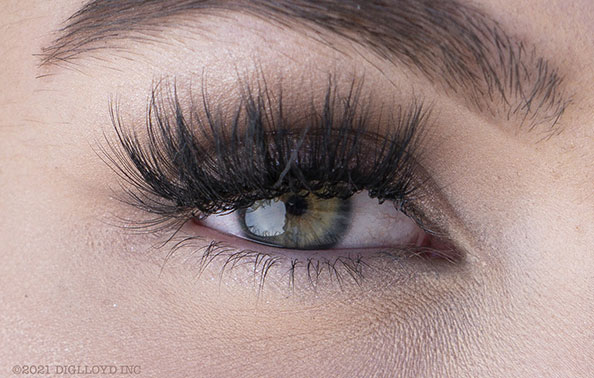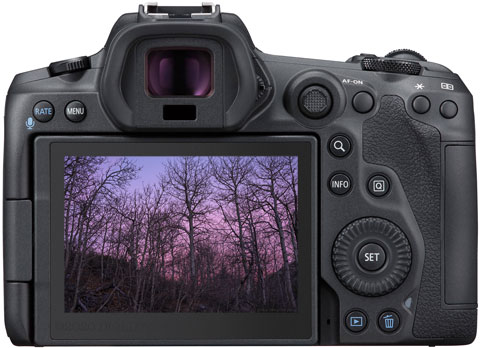Looking for Reader Suggestions: Best Ways to Acquire and Track Human and Animal Eyes
re: Self Timer with Delayed-Initiation of Eye AF?
With the Sony A1 arriving Monday and not being a wildlife photographer and only occasional portrait-maker, I thought it prudent to inquire as to the key settings that readers out there have found actually work.

Panasonic S1R + Leica 50mm f/1.4 Summilux-SL ASPH
[low-res image for bot]
As in nailing focus on the iris of the eye at close range and wide apertures. And doesn’t think eyeglasses are eyes either. In other words, getting it right. I’m not sure any of the cameras claiming to have Eye AF can really do all that.
I ask especially because I have yet to find a camera that makes Eye AF truly easy to use, including the Sony A7R IV, Olympus E-M1 Mark II, Nikon Z7 (prefers eyeglasses), Panasonic S1R (prefers eyebrows and eyelashes).
By easy to use, I mean that I expect to frame my subject as I wish to shoot it with the camera finding the iris of the eye, and tracking it if C-AF is on. I should not have to place a focus sensor on or near an eye to initiate things—I want the camera to find the eye (but prioritizing an eye near the focus sensor). And I want a “nearest eye” option, not a left/right eye choice.
And I want the camera to deliver a 99% hit rate at f/2 at 105mm at 4 feet on the iris of the eye, be it human with or without eyeglasses or mascara, or a cat or a bird or a newt. I won’t complain if it doesn’t get fly or spider eyes.
So for, no camera I’ve used actually does that. So far, it seems like I must use a small group of focus sensors or a single focus sensor and get those very near to an eye to start with. And then recompose because to place that AF sensor precisely meant that I had to frame differently to give the camera the hint.
Worse, so far, all the cameras I’ve used do not really focus on the iris of the eye, but rather delight in grabbing eyebrows and eyelashes and eyeglasses, all too often leaving the iris obviously blurred—even in camera company website sample images touting Eye AF!
Sony A1 Eye AF — will it really work?
Eye AF on the Sony A7R IV works pretty well, but it doesn’t succeed as I’ve described above. Along comes the Sony A1. So I wonder if there is really a true “iris of the eye” focus for (1) people, (2) animals like cats, (3) birds. More computational power doesn’t fix bad algorithms however—if it’s looking for eye shapes and neglecting to find the iris, it’s still broken.
A feature that can be enjoyed by letting the camera do the work of finding the eye, without having to cajole the camera by placing an AF sensor near an eye to start with. And whether the (iris of) eye can be tracked accurately too, when C-AF is on and across multiple frames-taken.
It’s a big ask for sure.
The acid test would be using something like the Sigma FE 105mm f/1.4 DG HSM Art at f/2 or so at fairly close range on people and cats*. Any miss would be pretty obvious.
Anyone?
* Stopped down more or at greater distance, depth of field increases and can mask a 'miss'. If/when Eye AF really works, the iris should be sharp wide open. Claiming it works by evaluating f/4 or f/5.6 or f/8 images is non-proof.
David S writes:

The 2 cameras that meet your eye-AF desires of 1) finding the eye without having to put the focus area on or near the eye and 2) focusing on the iris are the Canon R5 and R6. I personally use the R5 and can attest to it finding the eye even if the AF area is planted elsewhere on the subject. I have a fair bit of experience using it for bird photography. I can plant the AF area on the chest, belly or wing of a bird and the eye-AF box will quickly jump up to the eye and track it.
With regard to focusing on the iris of people or animals with a prominent iris, I have less experience of that (most birds’ eyes tend to be all black). I have used the original Canon R with the eye-AF firmware update to photograph my niece and it plants focus on the iris (I tend to use the R for people where I don’t feel the need for many pixels and I use the R5 for wildlife). The R will also switch focus to the closer of the 2 eyes. Presumably the newer R5/6 will do the same.
On YouTube, I have seen R5/R6 vs Sony A1 comparisons by Tony & Chelsea and Jared Polin. Both say that the Canon R5/6 are still the only ones that really nail focusing on the iris. Sony still has a tendency to forward focus on eyelashes with the A1.
With regard to AF settings, these tend to be about AF staying on the subject if something moves in front of it or switching focus to something new that moves into the frame. I know of no settings that will help eye-AF focus on the iris; it either does it or it doesn’t. Canon’s advantage may be in its Dual Pixel AF (DPAF) technology which in theory allows it to be much more granular since every pixel on the sensor is subdivided into 2 halves for phase detection. It is my understanding that Sony’s PDAF on the other hand uses a subset of pixels on the sensor that have a different microlens diopter to achieve phase detection. So it is possible that that difference in granularity of the AF systems may be making the difference to focusing on the iris.
I recommend that you tryout animal eye-AF on the R5. It is almost incredible that a camera can have that level of ability to so reliably find eyes in the frame.
DIGLLOYD: score 1 point for the Canon EOS R5. I have yet to review it but it will be my priority after the Sony A1 and Fujifilm GFX100S.
Jim S writes:
Canon R5 and R6 nail iris focus most of the time at f/1.2 with the RF 50 1.2 (photo examples with crop below) and RF 80 f/1.2. With eyeglasses, the hit rate goes down and will sometimes get the lashes only, but even then the iris is not completely out of focus. If you stop down to at least f/2, the percentage goes up to over 90%. Seems to work equally well in AF-C with motion as it does without motion in single-shot mode. But... the eye-AF through glasses is pretty hit or miss even with those light frames.
Canon EOS R5 and R6 are also scary-good with animal eye-AF, provided the subject is not too distant. Shots taken of my cats with the RF 70-200 f/2.8 and RF 50 f/1.2 wide open are about 100% accurate on the eye (I assume since cat eyes are so big maybe, I don’t know).
Also shots of perched or flittering birds at 25-50 feet with the RF 100-500 – it just nails the eye AF in AF-C. I’ve not shot dragonflies myself, but I’ve seen videos on YouTube where the animal eye-AF locks onto their eyes! Crazy.
DIGLLOYD: another point for the Canon EOS R5. Though "not completely out of focus" sounds like a miss to me; that’s my complaint—eyes have to be tack sharp. The examples Jim sent are somewhat persuasive, but my daughter has dark frames for eyeglasses (example sent to me is a light color frame), and I suspect the R5 will not get her eyes in focus with those frames.



























